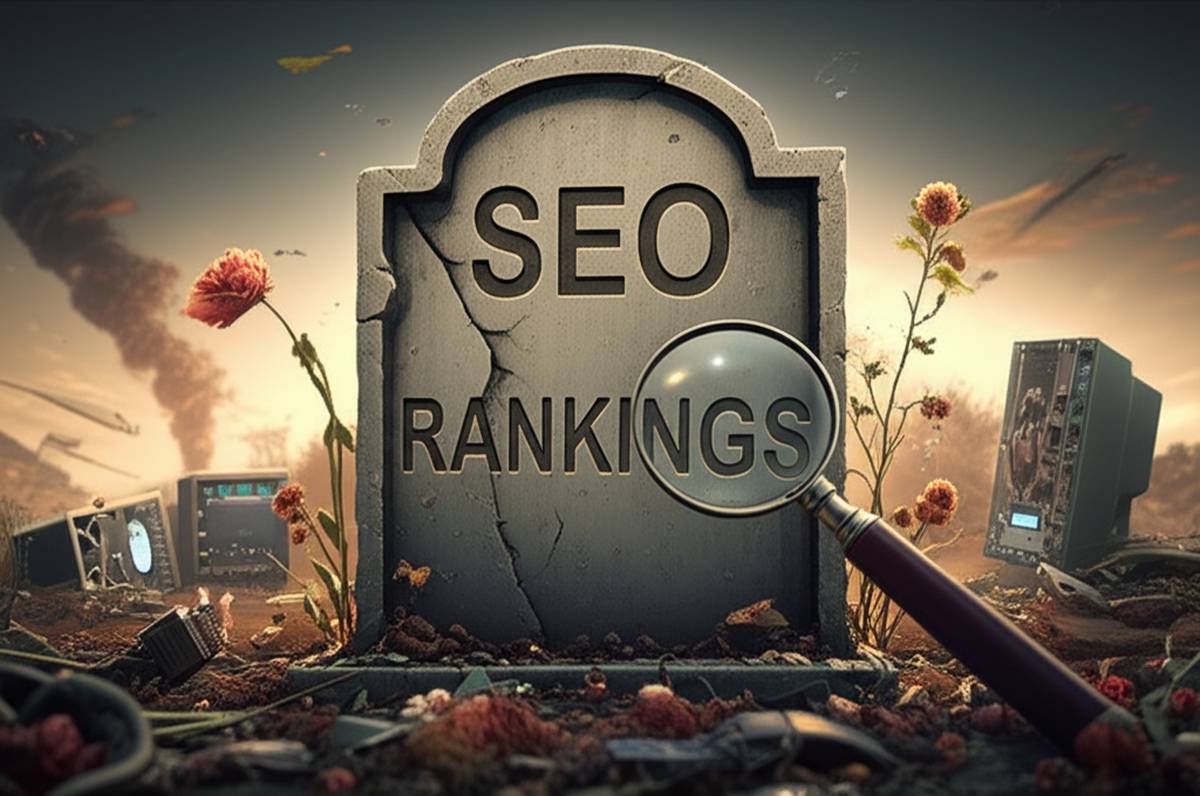Search engine optimization remains one of the most critical factors determining your website’s success in 2025. However, many businesses unknowingly sabotage their rankings through preventable SEO mistakes that can devastate their online visibility. After analyzing thousands of websites and their performance metrics, we’ve identified the most damaging errors that continue to plague even experienced marketers.
Understanding these common pitfalls and implementing the right fixes can mean the difference between page one visibility and digital obscurity. This comprehensive guide examines the most critical SEO mistakes that destroy rankings and provides actionable solutions to restore your search performance.
The High Cost of SEO Mistakes
Before diving into specific errors, it’s crucial to understand the real impact of SEO mistakes on your business. Recent studies show that websites dropping from the first page of search results can lose up to 90% of their organic traffic within 30 days. This dramatic decline directly affects lead generation, sales, and brand visibility.
The most dangerous aspect of SEO mistakes is that they often compound over time. What starts as a minor technical issue can snowball into a complete rankings collapse if left unaddressed. Search engines continuously refine their algorithms, making previously acceptable practices into ranking killers.
1. Keyword Stuffing and Poor Keyword Strategy
One of the most persistent SEO mistakes involves the misuse of keywords. Many website owners still believe that cramming their target keywords into every possible location will improve rankings. This outdated approach now triggers search engine penalties and creates a poor user experience.
Modern search engines prioritize natural language and semantic understanding. When content reads artificially due to excessive keyword repetition, both users and search engines recognize the manipulation attempt. The result is lower rankings and reduced engagement metrics.
How to Fix Keyword Issues:
Develop a strategic keyword approach that focuses on user intent rather than keyword density. Use professional SEO tools to identify long-tail keywords and related terms that naturally fit your content context. Tools like the Keyword Extractor can help you discover semantic variations and related phrases that enhance content relevance without over-optimization.
Create content that addresses specific user queries comprehensively. Instead of repeating the same keyword phrase, incorporate synonyms, related terms, and natural variations that reflect how people actually search for information.
2. Technical SEO Neglect
Technical SEO forms the foundation of search engine visibility, yet many websites suffer from critical technical issues that prevent proper indexing and crawling. These problems often remain invisible to website owners until they cause significant ranking damage.
Common technical SEO mistakes include broken internal links, slow page loading speeds, improper redirect implementations, and crawl errors that prevent search engines from accessing important pages. Each of these issues sends negative signals to search engines about your website’s quality and reliability.
Fixing Technical SEO Problems:
Conduct regular technical audits to identify and resolve issues before they impact rankings. Use tools like the URL Redirect Checker to ensure your redirects are implemented correctly and aren’t creating redirect chains or loops.
Implement structured data markup to help search engines understand your content better. Optimize your website’s loading speed by compressing images, minifying code, and leveraging browser caching. These technical improvements directly impact ranking factors and user experience metrics.
3. Content Quality and Relevance Issues
Content remains king in SEO, but many websites fail to meet modern quality standards. Thin, duplicate, or irrelevant content not only fails to engage users but also signals to search engines that your website doesn’t provide value.
The most damaging content mistakes include publishing articles without proper research, creating content that doesn’t match user intent, and failing to update existing content as information becomes outdated. Search engines increasingly prioritize fresh, comprehensive content that thoroughly addresses user queries.
Improving Content Quality:
Focus on creating comprehensive, well-researched content that addresses user questions thoroughly. Each piece should provide unique value and insights that users can’t find elsewhere. This approach aligns with E-E-A-T principles by demonstrating expertise and authority in your subject matter.
Regularly audit your existing content to identify opportunities for improvement. Update outdated information, expand thin content, and ensure all articles meet current SEO best practices. This ongoing content maintenance prevents quality degradation that can harm rankings over time.
4. Mobile Optimization Failures
With mobile-first indexing now standard, mobile optimization mistakes can devastate your search rankings. Many websites still prioritize desktop experience while delivering poor mobile performance, creating a significant competitive disadvantage.
Common mobile SEO mistakes include unresponsive design, slow mobile loading times, intrusive pop-ups, and navigation issues that frustrate mobile users. These problems directly impact user experience signals that search engines use as ranking factors.
Optimizing for Mobile Success:
Implement responsive design that adapts seamlessly to all device sizes. Test your website’s mobile performance regularly using Google’s Mobile-Friendly Test and PageSpeed Insights tools. Address any issues that prevent smooth mobile browsing experiences.
Optimize mobile page loading speeds by compressing images, minimizing code, and implementing accelerated mobile pages (AMP) where appropriate. Fast mobile performance has become a critical ranking factor that can significantly impact your visibility in mobile search results.
5. Link Building Mistakes
Link building remains a crucial ranking factor, but many websites damage their authority through poor link building practices. These mistakes can result in penalties that are difficult to recover from and require significant time and resources to address.
Common link building errors include purchasing low-quality links, participating in link schemes, and failing to diversify anchor text. These practices violate search engine guidelines and can trigger algorithmic or manual penalties that devastate rankings.
Building Quality Link Profiles:
Focus on earning links through valuable content creation and relationship building. Develop resources that naturally attract links from authoritative websites in your industry. This organic approach builds sustainable authority that improves rankings long-term.
Diversify your link profile by earning links from various high-quality sources with natural anchor text variation. Monitor your backlink profile regularly to identify and disavow any toxic links that could harm your rankings.
6. Local SEO Oversights
For businesses serving local markets, local SEO mistakes can eliminate visibility in geographically targeted searches. These errors prevent potential customers from finding your business when searching for local services or products.
Critical local SEO mistakes include inconsistent NAP (Name, Address, Phone) information across directories, unclaimed Google My Business listings, and missing local schema markup. These issues confuse search engines and reduce local search visibility.
Mastering Local SEO:
Ensure consistent business information across all online directories and platforms. Claim and optimize your Google My Business listing with complete information, regular updates, and customer review management. This foundation supports strong local search performance.
Implement local schema markup to help search engines understand your business location and services. Create location-specific content that addresses local customer needs and incorporates relevant geographic keywords naturally.
7. Analytics and Monitoring Failures
Many websites operate blindly without proper SEO monitoring, making it impossible to identify problems before they cause significant damage. This reactive approach often results in prolonged ranking declines that could have been prevented with early detection.
Common monitoring mistakes include ignoring Google Search Console warnings, failing to track key performance indicators, and not setting up proper conversion tracking. These oversights prevent data-driven optimization and leave websites vulnerable to algorithmic changes.
Implementing Effective SEO Monitoring:
Establish comprehensive monitoring systems that track rankings, traffic, and conversion metrics. Set up Google Search Console and Google Analytics properly to receive alerts about technical issues and performance changes.
Create regular reporting schedules to review SEO performance and identify trends before they become problems. This proactive approach enables quick responses to algorithm updates and competitive changes.
Recovery Strategies for Ranking Drops
When SEO mistakes cause ranking drops, quick and strategic action can minimize long-term damage. The key is identifying the root cause and implementing targeted fixes rather than making broad changes that could worsen the situation.
Start by analyzing recent changes to your website, content, or SEO strategy. Review Google Search Console for any manual actions or significant crawl errors. This diagnostic approach helps pinpoint the specific issues causing ranking problems.
Systematic Recovery Process:
Document all identified issues and prioritize fixes based on potential impact. Address technical problems first, as these often have the most immediate effect on rankings. Then focus on content improvements and link profile cleanup.
Monitor recovery progress closely and be patient, as ranking improvements often take several weeks or months to fully materialize. Avoid making additional changes during the recovery period unless absolutely necessary.
Prevention: Building SEO Resilience
The best approach to SEO mistakes is preventing them through systematic processes and regular maintenance. Establish SEO standards and review procedures that catch issues before they impact rankings.
Create documentation of your SEO processes and ensure team members understand best practices. Regular training and updates help maintain quality standards as search algorithms evolve.
Maintaining SEO Health:
Implement monthly SEO audits that review technical performance, content quality, and ranking factors. This regular maintenance prevents minor issues from becoming major problems.
Stay informed about search engine algorithm updates and industry best practices. Subscribe to authoritative SEO resources and participate in professional communities to maintain current knowledge.
Conclusion
Avoiding common SEO mistakes requires ongoing vigilance and systematic approach to optimization. The digital landscape continues evolving, making continuous learning and adaptation essential for maintaining strong search rankings.
By understanding these critical errors and implementing the recommended fixes, you can build a resilient SEO strategy that withstands algorithm changes and competitive pressures. Remember that SEO success comes from consistent application of best practices rather than quick fixes or shortcuts.
The investment in proper SEO practices pays dividends through sustained organic traffic, improved conversion rates, and stronger brand visibility. Take action today to audit your website for these common mistakes and implement the necessary corrections to protect and improve your search rankings.
This article provides general SEO guidance based on current best practices and industry standards. SEO strategies should be tailored to specific business needs and regularly updated based on performance data and algorithm changes.

